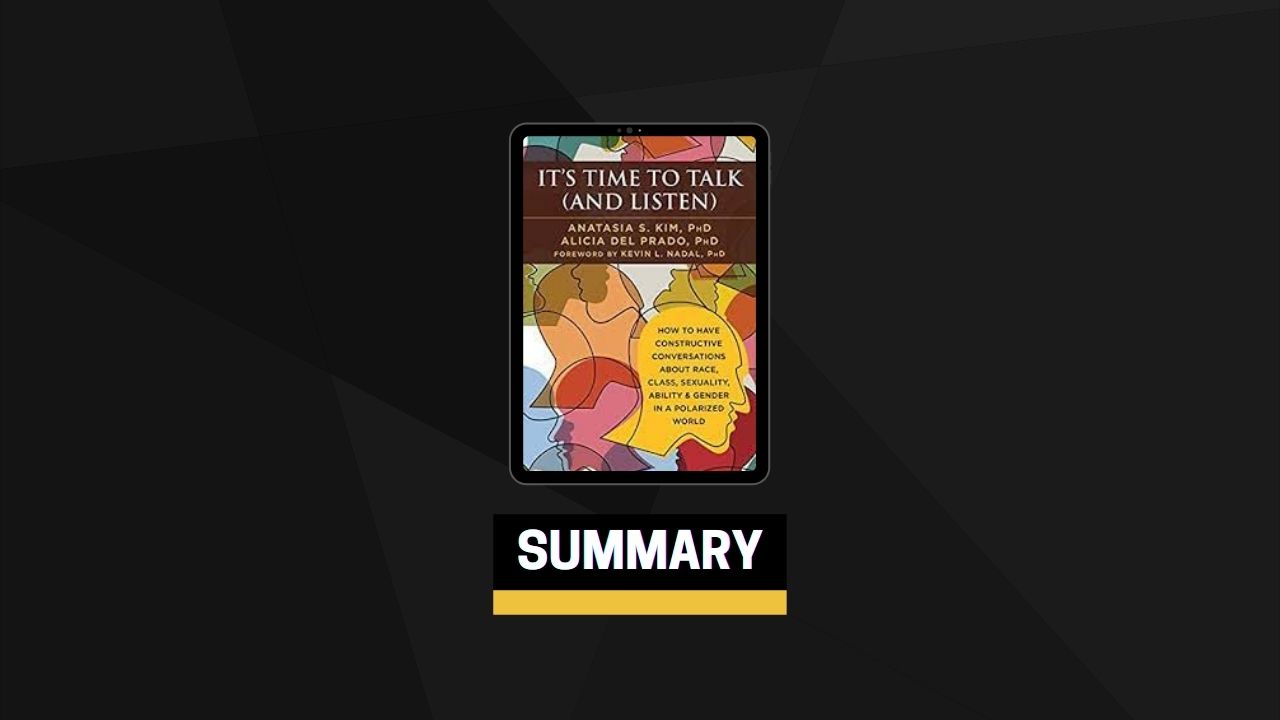Mirror, Mirror, on the Wall
In the current volatile political climate, any conversation on culture and diversity is potentially loaded, if not explosive. It feels like there are virtually no safe or easy topics. As a result, there’s a greater risk of getting sucked into the divisive vitriol—nasty Twitter storms, political stalemates, and tit for tat—further fueling hatred and pain. Not surprisingly, this leads to higher blood pressure, as well as to greater distance and deeper divide between families, friends, and communities.
If you have been able to escape this pull, then you may be experiencing the other extreme: A total shutdown. Disengagement. Disconnection. Unfortunately, the initial impact of denial and delusion usually gives way to numbness and ultimately the same outcome as the first scenario—greater distance and deeper divide between families, friends, and communities.
All this just goes to show that undertaking the challenge of having constructive conversations, against such an intense backdrop, is not easy! In fact, it has made the stakes of taking risks to broach conversations on any cultural topic uncomfortably high. It has also made the stakes of not broaching such conversations even higher still.
It may feel like you either get sucked in all the way or you steer totally clear from any of these topics. However, we need to both stay engaged and not get hijacked by our feelings or others’ reactions. Neither attacking nor retreating is the answer. We need to find middle ground. We need to move toward and soften into these uncomfortable spaces within ourselves and between one another.
Step 1: Identify a Grounded Goal
First, before doing anything else, ground yourself by turning inward. Use your own unique grounding tools to practice mindfulness of body, thoughts, and feelings.
Once you are grounded, clearly articulate your goal for wanting to have a constructive conversation. Simultaneously consider the presence of any strong emotions. Are they connected in any way to more vulnerable, deeper emotions that can provide clues about your true intentions? What about the role of your own healing? In some way, is part of your goal about calming your fear or healing your pain? Remember, understanding why you wish to have a constructive conversation, including why you might be angry, afraid, or hurting, is critically important to developing a viable goal. Without understanding, you cannot neutralize or manage your strong emotions.
Finally, step away just a bit from your personal attachment to all of this, and create room for the gravity and magnitude of the issues involved. Hopefully, reminding yourself of how pervasive and long-standing these challenges are gives you some sense of context and perspective, as well as an invitation for patience and compassion.
Step 2: Locate and Acknowledge Barriers
You’ve looked in the mirror and examined your blind spots. It’s not an easy task, but it’s usually an interesting one, to learn more about yourself. Hopefully, you now have a good grasp of what internal and external barriers you may be most commonly up against when pursing constructive conversations.
It can be daunting to see how many obstacles can get in the way but also validating that this is hard work—there are many challenges inherent in working against the paradigm. While identifying barriers is a key step, it’s up to you to make sure they don’t have the last word.
Step 3: Setting a Value-Driven Intention
Identifying values or using them to address our barriers might not be easy. But we are all capable of it.
Please take your time in setting your values. Be patient. You don’t want a quick solution—that usually only leads to bigger problems later. Remember, your barriers, including strong emotions and fear of uncertain outcomes, require your time, patience, and care to work through them.
Now that you have set a goal, identified your barriers, and set a value-driven intention, you are ready to move onward. In the steps ahead, emotional storms might await you. Remember to keep coming back, again and again, to your values. They will be your most faithful, reliable, and effective guides and companions.
Step 4: Set the Stage
Body Scan
Take a moment now to scan your body from head to toe. What do you notice about how you are sitting, standing, or lying? If someone walked by you right now, what do you think they would observe, without you saying a thing? Now, look around you. If there are others around, what do they seem to be telling you with their face, their stance, and their hands?
Through the Eyes of a Child
Have you ever noticed how children can watch television shows without any sound? Give this a try. Put on a random TV show that you haven’t watched before and mute the sound. Without being able to hear the actors’ words, pay attention to the way they look, their mannerisms, and what emotions they seem to display with their face.
Now answer these questions:
- Whom do you find the most approachable and the easiest to start a conversation with? Why?
- Whom do you want to avoid at all costs? What led you to this conclusion?
- How well do the actors seem to communicate with one another? What are your clues?
Mute the Media
Once a week, watch five to ten minutes of newscasts, TED talks, or YouTube videos with the sound off. Use it as a chance to remind yourself about the power of nonverbal communication and practice awareness of how our nonverbals shape our conversations.
You’ve started practicing one of the most challenging parts of the 8-step model. Learning how to set the stage involves actually uttering words to someone other than yourself, in a way that’s mindful of the content and delivery of your message. You are opening the door for a constructive, collaborative, and genuine dialogue. Hopefully, you now feel more confident to verbalize an opener that is anchored in your values. You also have some tangible tools to help you set the stage with an intentional, well-timed approach.
But we’re not done yet. More is around the corner. Productive, healing action is within your reach.
Step 5: Take Action
Taking action puts it all out there. You might be making an observation, giving feedback, and asking a question. Whatever format your action takes, please remember the three essential ingredients that will help ensure the success of your action: highlight your connection with other person, share your specific experience and perspective, and communicate your Ask—the wish to engage and dialogue. And as always, hold on to your values: the key to navigating these uncharted territories.
As you anticipate the countless ways taking action can transpire, you can become familiar with how taking action might differ based on who you are speaking with and under what contexts. Remembering your values and practicing and preparing for taking action are ways to help ground you so that you can take a stand when the time comes.
Step 6: Listen
Listening is a complex, multilayered experience. It requires that you engage fully, accurately, and with minimal distractions and interferences. It involves concerted effort to uncover the speaker’s underlying intentions and to attend to your nonverbal communication. It also mandates identifying and managing common pitfalls, which, if you’re not careful, could derail your intentions.
In order to listen deeply and meaningfully, you need to get up close. To do so, anchor again in your values. Allow your values—maybe those of courage, compassion, patience, and faith—to help keep your heart open, your ears curious, and your connection to your goal unobstructed.
Finally, don’t forget to be brave enough to be vulnerable and be affected. This will most certainly lead you to deeper relationships with others and, ultimately, closer to constructive conversations.
Step 7: Respond
We have now concluded a full cycle of the constructive conversation voyage. In the next step, we highlight the need to repeat the cycle. But for now, congratulations! You have completed a full lap of this journey. You have traversed the complex but now manageable step of responding. Mastery here will undoubtedly ensure your ability to complete more laps in the future.
Throughout this process, you have remained close to and harnessed your most invaluable tools. Values such as gratitude, faith, justice, patience, compassion, honesty, love, forgiveness, hope, mercy, and, of course, courage have been your constant, infallible street soldiers. They have supported you in strengthening your skills, carrying you many steps closer to new pathways to healing.
Step 8: Do It Again!
You can change the world one constructive conversation at a time, but one conversation alone won’t do it. Hopefully, the reality that the steps are designed to be repeated doesn’t feel overwhelming. Remember, you can take breaks and set your own pace. But we must keep marching on.
Writing down and carrying out your individualized plan will help you feel prepared for continuing what you started with this book. With purpose, you can navigate your way through all kinds of situations, even when you don’t know beforehand exactly what they will look like or how they will unfold.
And by your example you will inspire others to do the same. Only together can we build our community, through the courage to speak, listen, and act.


